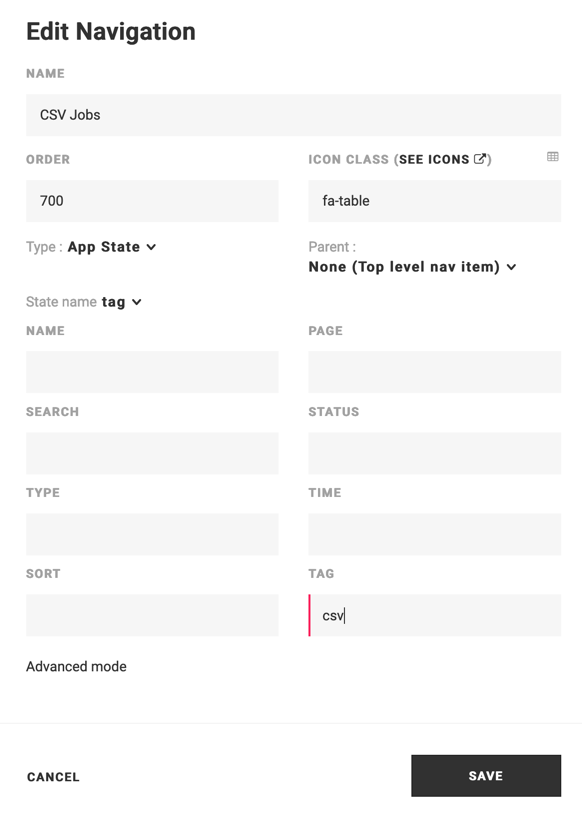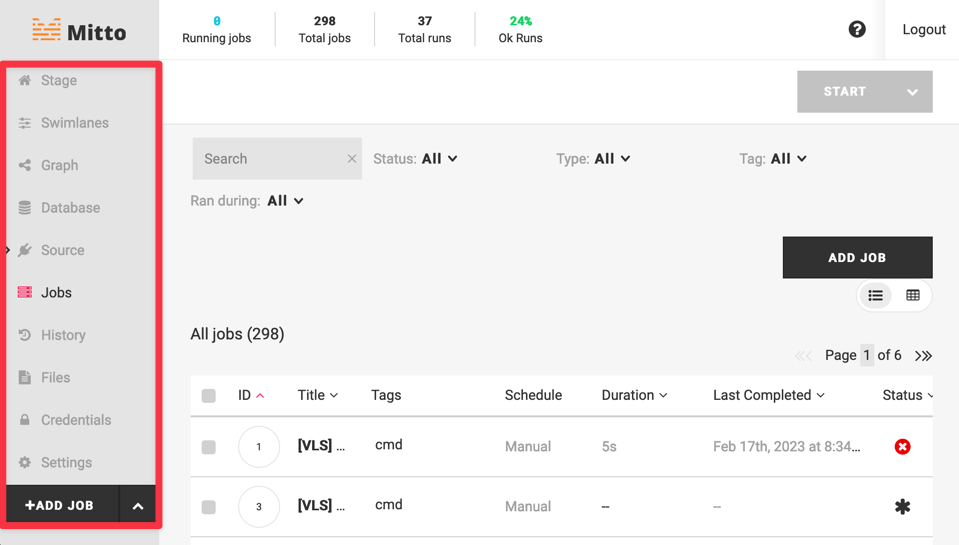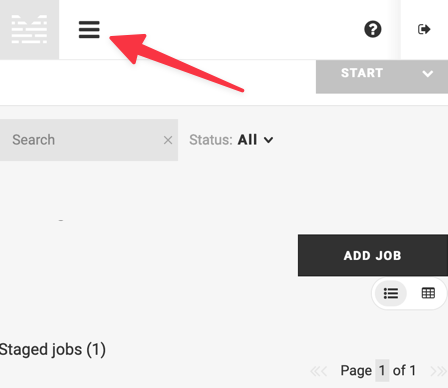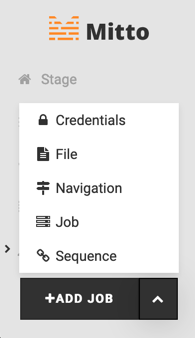This documentation describes a release under development. Documentation for the latest release, 3.6.2, can be found here.
User Interface (UI)¶
Mitto’s user interface (UI) allows users to create/edit jobs and perform many administrative tasks.
To access Mitto’s user interface, you’ll need the following information:
The URL of your Mitto instance.
A Mitto admin login.
See your Mitto administrator for these items.
Stage¶
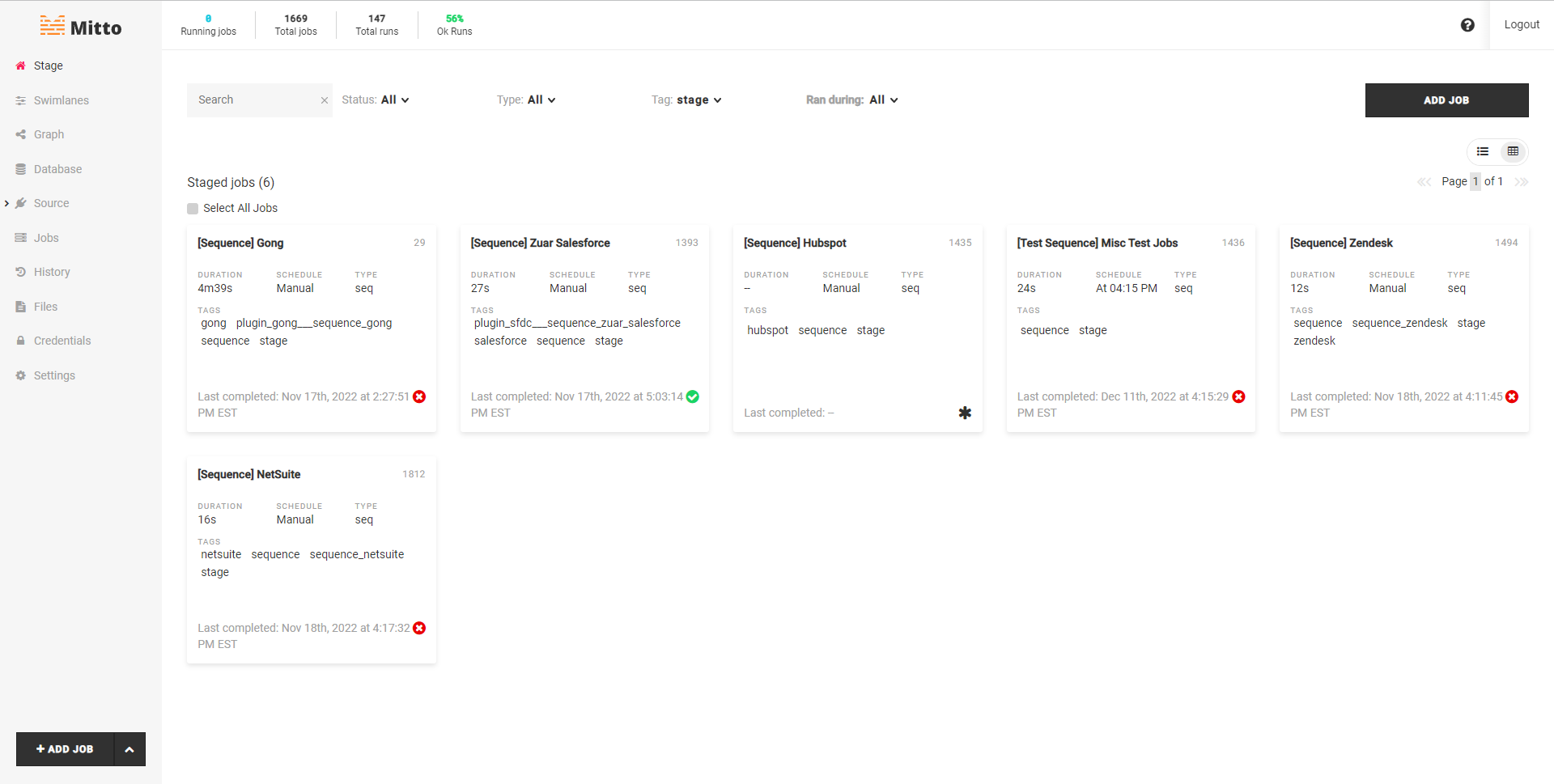
The Stage serves as a customizable “homepage” that presents your most important sequences and jobs as soon as you login.
The Stage presents a view of all of the jobs that are tagged with stage. If
you tag a job with stage the job will appear in this space automatically.
This can be used as a workspace for current projects, or as a place to collect jobs that you visit often. The Stage is a convenient place to put jobs that are important to you.
The Stage is often the first thing you see when logging in to Mitto. At any time, you can navigate directly to the Stage by clicking Stage on the left sidebar or the Mitto logo.
Warning
Until you tag a job or sequence with the word stage, all of your jobs and sequences will show up on the stage
Swimlanes¶
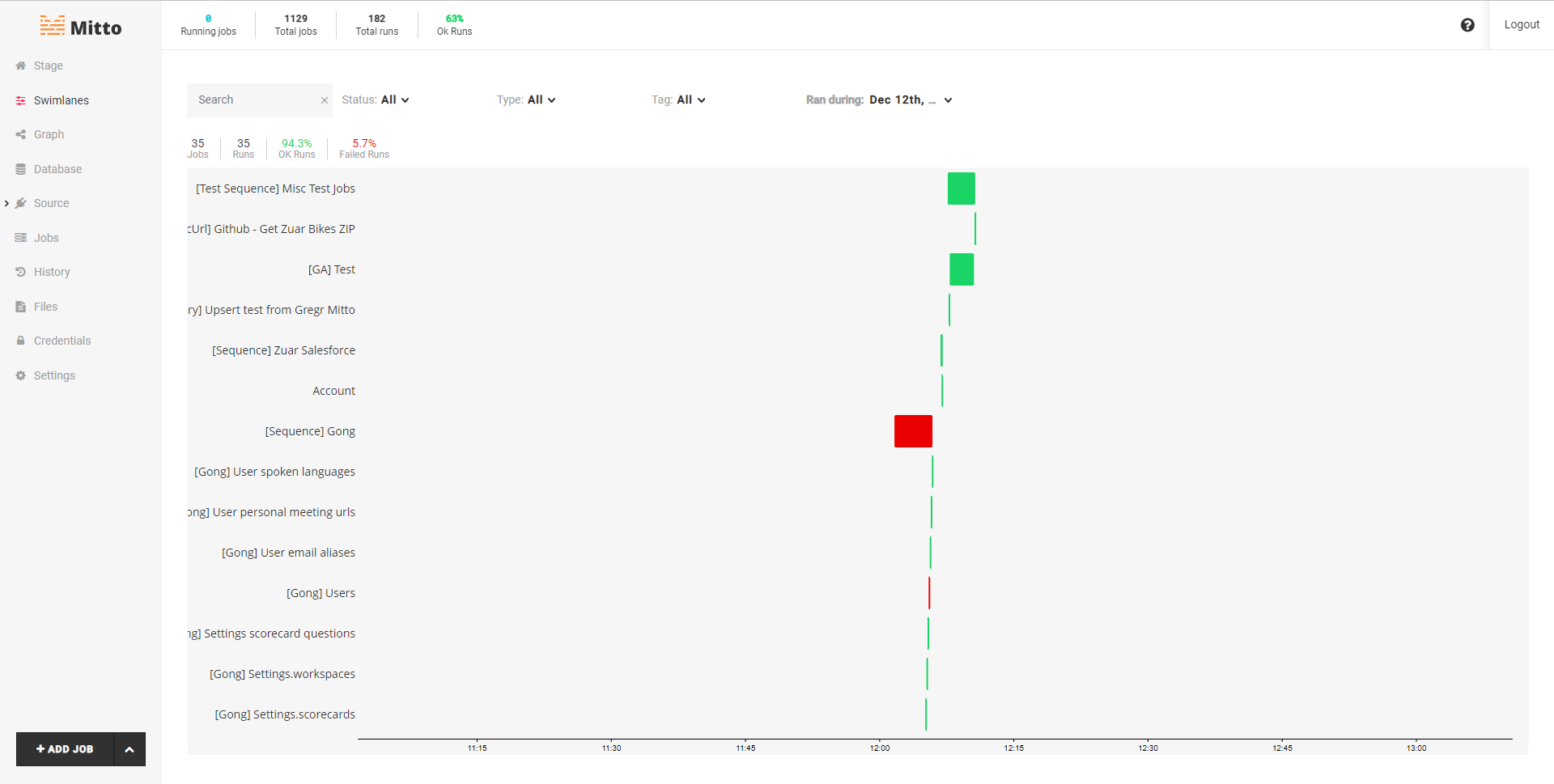
The Swimlanes page displays the history of job runs in a Gantt chart. You can use the Swimlanes page to get an overview of job runs, or get information that may help understand why something went wrong.
You can use filters to focus on:
Job status (running/success/failure)
Job type
Tags
Ran during: job execution start
The Gantt chart provides many insights:
Job start and end times
Job durations
Job concurrency
Jobs are color-coded to indicate status
Hover over the job run bar to see more detail
Quick navigation:
Click the name of a job on the left to go directly to the job.
Click a job run’s bar in the chart to be taken to the job run details page.
Graph¶

A place to visually see job and sequence relationships and job status. There are a variety of graph layout types available. There are also quick links to navigate straight to a specific job or sequence.
You can use filters to focus on:
Job status (running/success/failure)
Job type
Tags
Ran during: job execution start
Database¶
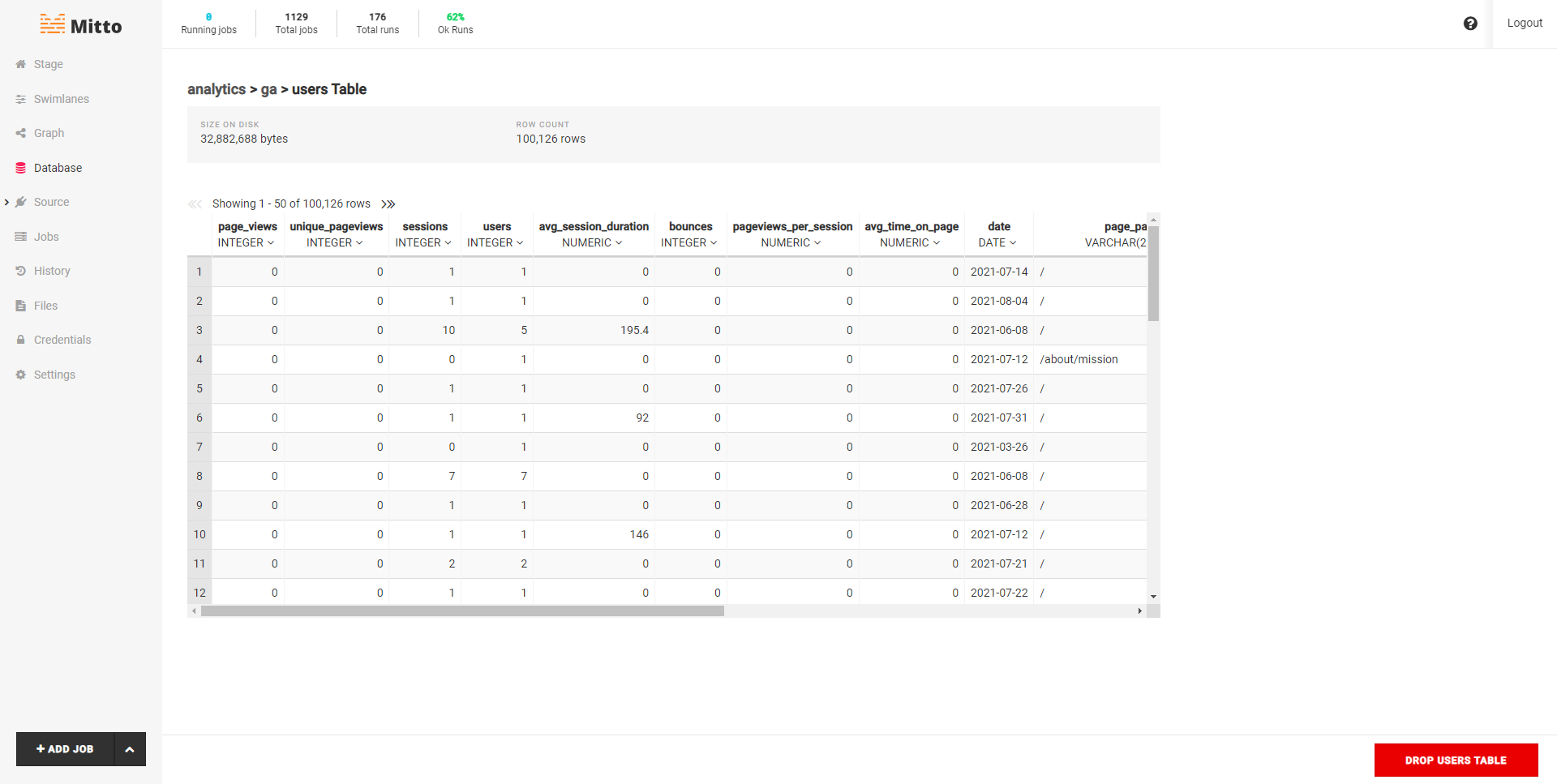
Provides a user interface for Mitto’s internal PostgreSQL database showing previews of its data tables. You can explore Mitto’s analytics database with the ability to drill into schema’s and physical tables. Once you’ve navigated to a table, you can drop the table with the red Drop Table button at the bottom. Caution! There is no undo after a table has been dropped.
Jobs¶
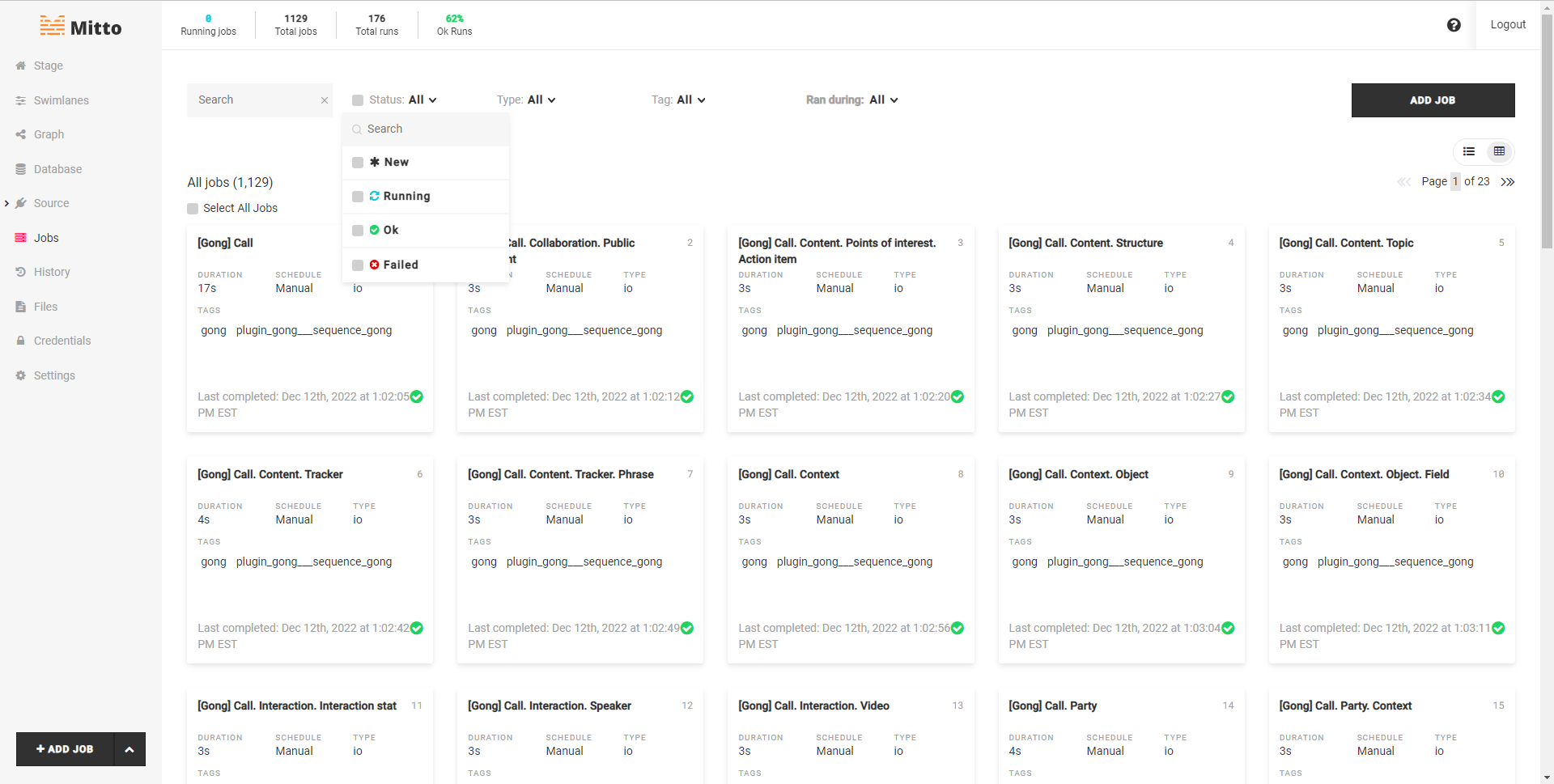
The jobs page is very similar to the Stage but used for searching and displaying all jobs on the Mitto instance. There are a variety of filters that can be used for finding specific jobs as well as a search field:
Job status (running/success/failure)
Job type
Tags
Ran during: job execution start
History¶
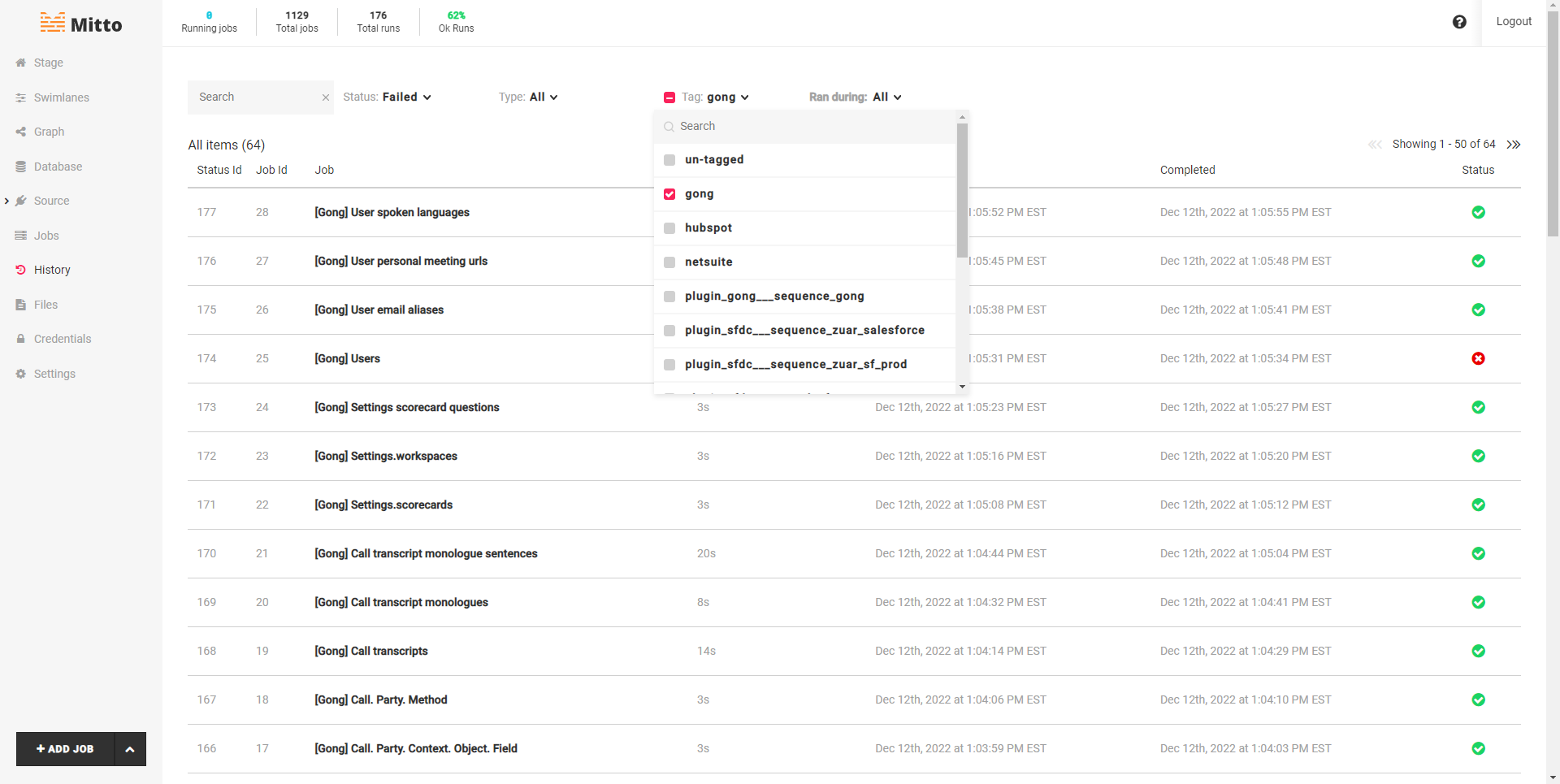
A history of all job runs on the Mitto instance. Usefully for finding job run problems or simply viewing the most recently run jobs. You can navigate directly to jobs and a job status from this page.
You can use filters to focus on:
Job status (running/success/failure)
Job type
Tags
Ran during: job execution start
Files¶
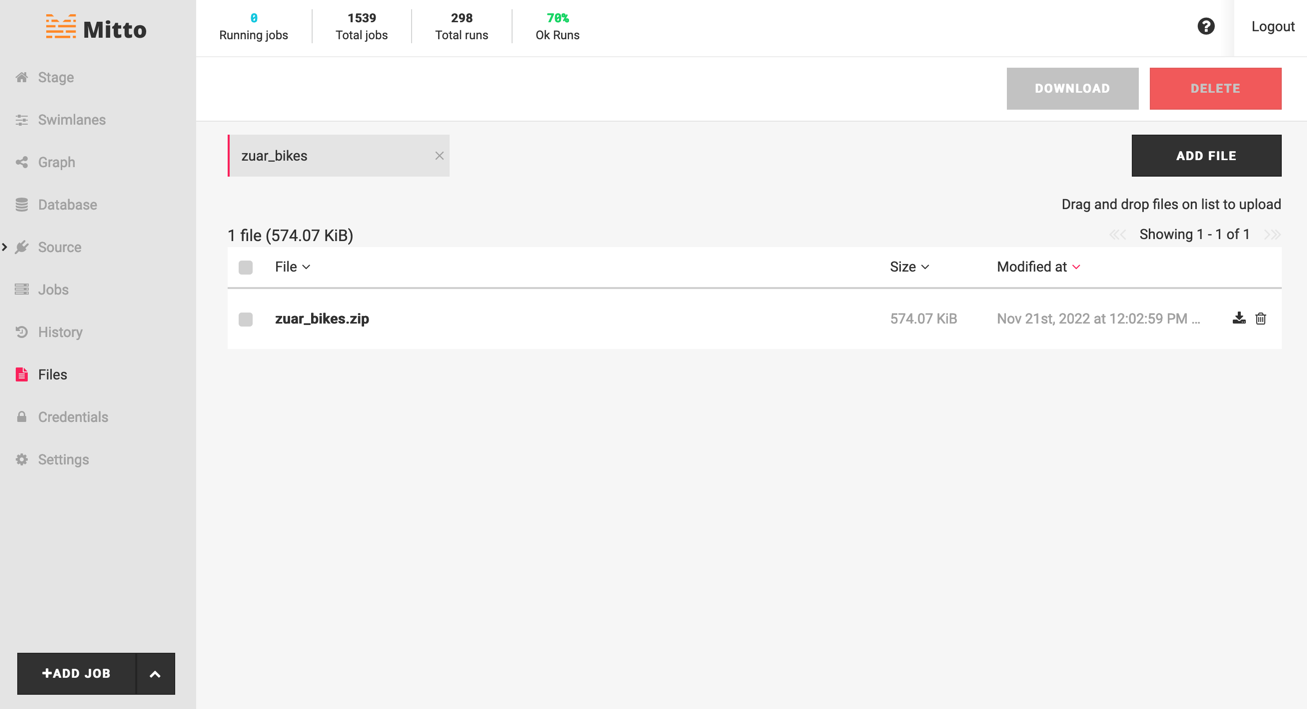
A built in file explorer for the /var/mitto/data/ directory on a Mitto
instance. This is generally where flat files are stored prior to being pushed
to a database or scripts can be saved for reference inside of command jobs.
You can find a specifc file via the Seach Files field.
The following file management operations are available:
Upload: Drag and drop files or click the Add File button to upload new files.
Download: Select file(s) using the checkboxes to the left of the filename. Click Download File button in upper right. Alternatively, click the Download icon at the right of the file’s row in the list.
Delete: Select file(s) using the checkboxes to the left of the filename. Click Delete File button in upper right. Alternatively, click the Delete icon (trashcan) at the right of the file’s row in the list. Make sure you really want to delete - there is no undo!
Note
Directories can be added within /var/mitto/data/ via the Mitto instance shell command line, but will not be visible on the Files page.
Credentials¶
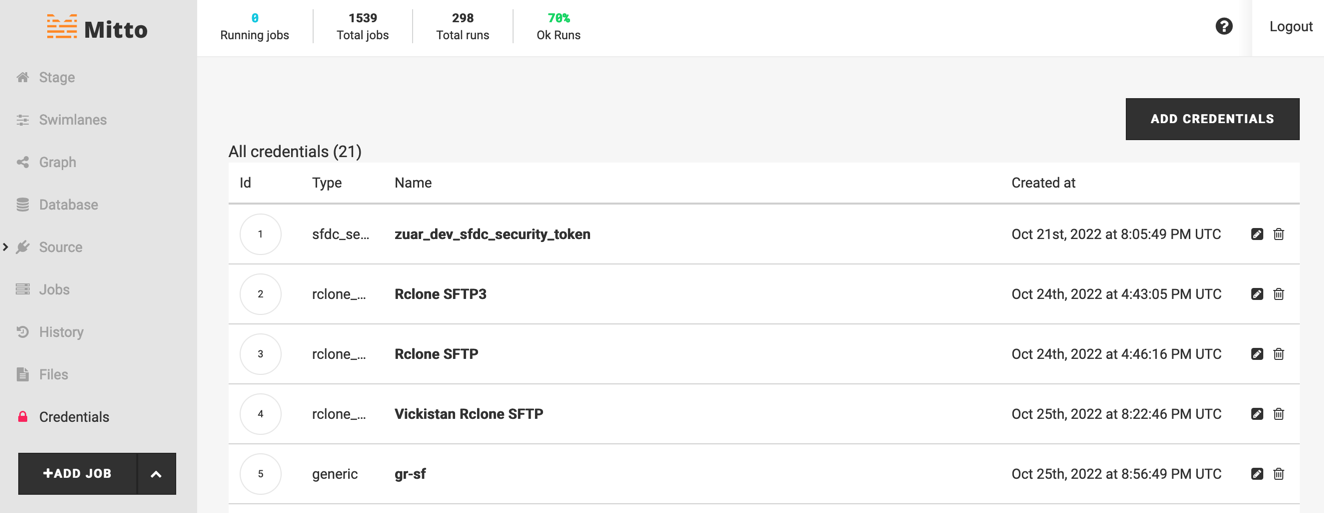
It is best practice to store and encrypt credentials that need to be used across the Mitto environment. Use this page to add and manage stored credentials.
Once stored in the credential manager, credentials are encrypted and can be referenced across the instance. When credentials need to be updated, update the stored credential and all jobs referencing that credential will be updated.
When creating a new credential, choose a Credential Type which matches the service you are connecting to, if available. If a matching Credential Type is not available, choose Basic or Generic.
Warning
Not all credential types can be stored and used in Mitto’s credential manager. Ask your Mitto administrator or Zuar about potential limitations.
Settings¶
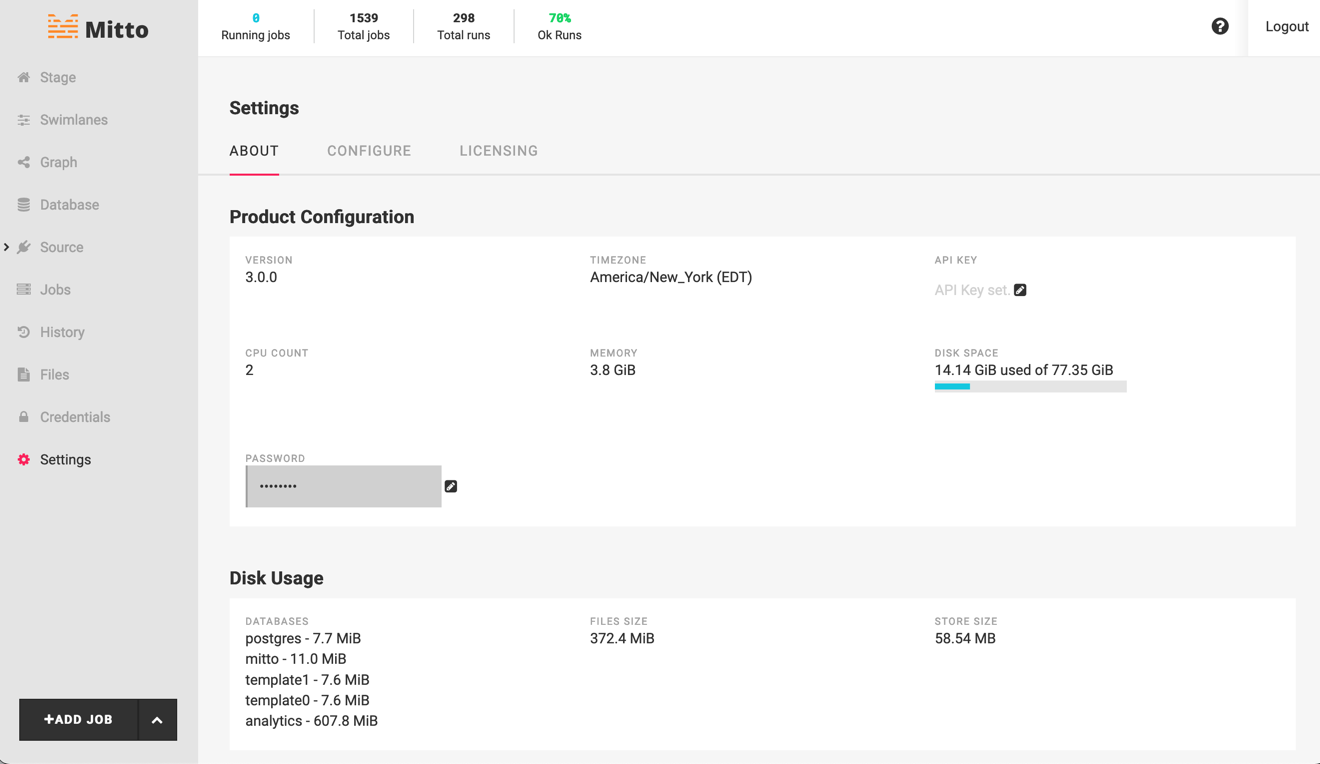
About Tab¶
Information about your Mitto environment:
Mitto Version
Timezone of the instance
API Key
Available hardware resources: CPU, Memory (RAM), Disk Space & Usage breakdown
Change Password
Configure Tab¶
Configure email notifications, enable Job Runner, and add custom navigation items.
Licensing Tab¶
View license status and connector details, including version.
Custom Navigation Items¶
Custom navigation items within the Mitto sidebar makes finding and organizing jobs easier. A custom navigation item allows you to group jobs by a shared attribute (e.g. tag) and easily access these grouped jobs from the sidebar.
To create a new Navigation Item:
Click the up arrow
^next to the + Add Job button and click Add Navigation. The Navigation editor also allows you add new items under Settings > Configure.Give the navigation item a Name
Set Order to a value that will place the Navigation item on the sidebar where you want it to appear.
Choose a relevant Icon.
Leave Type as
App StateSet Parent to
None, unless you are creating a nested sidebar item.Set State name to
tagand fill in the Tag field with your desired tag.Click Save.
